Free Fiction
 Free Fiction Wednesday takes you into the heated swamps of Bangladesh with a short story, A Tiger’s Heart Wrapp’d in a Woman’s Hide. To venture into amid the mangroves, click here.
Free Fiction Wednesday takes you into the heated swamps of Bangladesh with a short story, A Tiger’s Heart Wrapp’d in a Woman’s Hide. To venture into amid the mangroves, click here.
 Free Fiction Wednesday takes you into the heated swamps of Bangladesh with a short story, A Tiger’s Heart Wrapp’d in a Woman’s Hide. To venture into amid the mangroves, click here.
Free Fiction Wednesday takes you into the heated swamps of Bangladesh with a short story, A Tiger’s Heart Wrapp’d in a Woman’s Hide. To venture into amid the mangroves, click here.
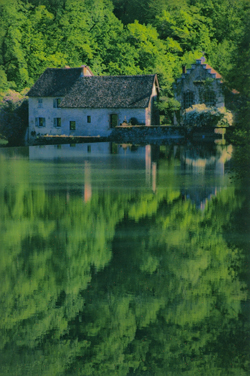
Last week I talked about the north and the impact of northern European perspective on the rest of the world. But other impacts of cartographers on human culture have perhaps gone less noticed. Case in point is the development of the metric measuring system and in particular the meter.
I grew up in Canada when the country was making the transition from Imperial (inch, foot, yard) measures, to the metric system. All I knew was the meter was a problem I had to solve and it’s interesting because I still think in both systems, flipping between the two much like a person who speaks multiple languages. At the time of the conversion there was much bemoaning the triumph of this foreign system no one in the public understood or knew anything about, but the meter grew out of science and at its heart, it arose from cartography.
The metric system was developed in France at the end of the 18th century in response to a burgeoning plethora of measuring systems that differed across each province in that country. Consider the toise, for example, which measured about 6 French feet (which were longer than Imperial feet – go figure). The trouble was, most measures grew out of some local whim, much like the yard (originally the length of a sash used by Saxon Kings, and then the distance from the tip of King Henry the First’s nose to the end of his thumb). The toise supposedly was half the width of the Louvre’s main gate.
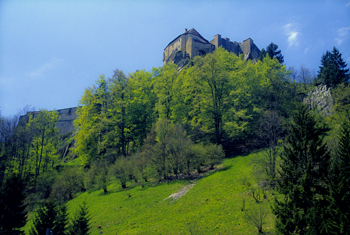
But these unscientific (and in France, inconsistent) measures made it impossible for scientists from different jurisdictions to talk to each other, and difficult for maps created in different jurisdictions to be amalgamated into a larger map of France. As a result, in 1790 the French Academy of Science, at the request of the French government, embarked on a search to create an invariable standard of measurement and weight. They chose to create a measurement that would be one ten millionth of the meridian distance between the North Pole and the equator and measures of weight were to be developed from the unit of length. The name to be given to the new measure was metre or meter, derived from the Greek work metron, meaning ‘a measure’.
The trouble was, after the decision, they had to determine how long the meter was. They had tentative data about the meridian distance from the North Pole to equator due to earlier surveys, but they needed more accurate data and decided to run a survey between Dunkerque and Barcelona – a portion of a single meridian. The political and social instability in France at this time made the feat more difficult than it sounds. The surveyors, strangers, were often mistaken and arrested as spies because of their strange instruments and white surveyor flags that happened to be a royalist color (remember the French revolution). Eventually they completed their survey and the academy prepared a platinum bar the length of a standard meter to establish this length. This changed the estimated length of the meter by less than 0.3 millimeters, indicating how accurate previous surveyors had been.

From this, the weight of a cubic centimeter of water became a gram, a cubic decimeter became the liter Canadians and much of the world use for fuel and milk today. For France’s issue with inconsistent measures was also an issue across the globe. In 1875, twenty nations met in Paris to adopt the Convention of the Meter and it is the measure of science around the world. But the meter still had one final change to make. In 1960, to increase the meter’s consistent length (remember how the curve of the world and the thickness of its crust impact measurements) the definition of its length changed to the length of a certain number of wavelengths of light emitted by krypton atoms. Thankfully, this didn’t mean any real change in its length.
There is Always a Burning –
Karen L. Abrahamson
When an imprisoned djinn offers a eunuch Chinese Admiral his heart’s desire, it threatens the whole history of North America – unless the Admiral can make choices worthy of the man he hasn’t been for a very long time. To read on click here.
By Karen L. Abrahamson
Only the brave and the lucky can survive the walking dead, the frozen winter and the perilous ice dragon.
When seventeen-year-old Jazella of Gruenheld faces a forced marriage to the ancient Venerable Heed, she makes the decision to leave the safety of Gruenheld’s stockade walls in hopes of obtaining the treasure that will buy her freedom. Faced with the dead and the dragon, will her luck hold?
Available on Smashwords and Amazon
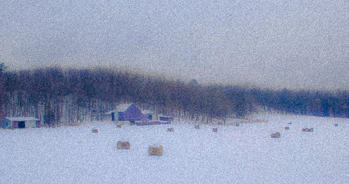 Once upon a time there was a mapmaker who lived in the Northern hemisphere, and who from amongst the four cardinal directions, chose north as the primary direction at the top of the map. Not that it didn’t make sense. Men had taken their direction from the North Star for eons, but this was different than the religious maps that had existed until then, which often, at least for Christians, placed the east as the cardinal direction(as that was the direction of paradise). But this ancient mapmaker with his northern bent started a trend that has continued to this day. Our maps are oriented northward, and consequently they give primacy to the north.
Once upon a time there was a mapmaker who lived in the Northern hemisphere, and who from amongst the four cardinal directions, chose north as the primary direction at the top of the map. Not that it didn’t make sense. Men had taken their direction from the North Star for eons, but this was different than the religious maps that had existed until then, which often, at least for Christians, placed the east as the cardinal direction(as that was the direction of paradise). But this ancient mapmaker with his northern bent started a trend that has continued to this day. Our maps are oriented northward, and consequently they give primacy to the north.
For those of us who live in the north this doesn’t seem like an issue, but anthropologists and historians suggest that this emphasis on the north has colored how we think of the world. They posit that maps embody the interests of their creators and that emphasis on the north contributed to phenomena like African colonization, South American conquest, the Anglo-Indian Raj, and Orientalism, where northerners believed they had the god-given right to claim the land and ‘civilize’ the natives. Heck it wasn’t that long ago in human mapmaking history that we thought the south was populated by single footed beings who used their overlarge foot as shade against the killing southern sun. Anthropologists and historians propose that the northern cultures believed that they were the civilized nations. Therefore the south wasn’t, or so the story goes.
 There are those who say that the map structure itself with its focus on the north as at the top and the south at the bottom, created or embodied a thinking error that, in turn, created the sociopolitical situation in the world today with the north as the ‘have‘ nations and the south as ‘have nots.’
There are those who say that the map structure itself with its focus on the north as at the top and the south at the bottom, created or embodied a thinking error that, in turn, created the sociopolitical situation in the world today with the north as the ‘have‘ nations and the south as ‘have nots.’
All this illustrates that maps hold power beyond the simple placement of landscape features. We use maps for illustrating far more than roads and mountains and political boundaries. Maps are used to present information about populations and this information has incredible power. Poverty. Number of people per square mile. Alcohol consumption. The owner to dog ratio. All of these things have been presented in maps and once they are presented this way, the knowledge of the poverty or population density or alcohol use or dog to person ratio becomes the reality of a particular location. The trouble is that often these informational maps focus the viewer on only one thing to the exclusion of all else.
Case in point is a series of maps of a community I’m working with. These maps show the vulnerabilities of a community’s population by neighbourhood. Policy makers and managers who view these maps want to focus all their resources on the neighbourhoods with the highest percentage vulnerability. Sound like the right thing to do?
Perhaps. But what if I told you that the neighbourhood with the highest vulnerability also has one of the smallest populations? What if I told you that the vulnerable population of another neighbourhood, while being a smaller percentage, actually far outnumbers the vulnerable population of the first neighbourhood in terms of actual people? What do you think then?
And if I told you that the first neighbourhood contains virtually all the community resources of the combined neighbourhoods, would you expect the policy makers and managers to rethink their resource allocation decision?
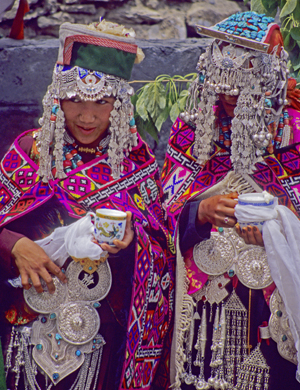
The trouble is this often doesn’t happen. Well-meaning people take the face value of a map and think it’s the truth, instead of looking at the layers of truth behind the map. Often these layers hold just as many faults as the map we are looking at, but failing to look leaves all the layers unquestioned. When this happens, these well-meaning people may propagate a thinking error that, though well-intended, has the potential to lead map readers astray, just like that ancient map-maker’s work.
Last week I wrote about how the cartographers of the early western mapping tradition created North America in the public’s imagination through their tales of the Garden of the World that awaited the person daring enough to travel westward, and through their splendid maps that unrolled the future in the shapes of the landscape.
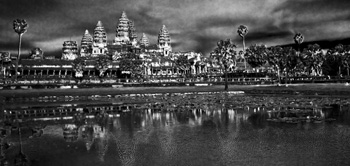 But maps also set out losses. Ancient maps show the destructive ebb and flow of empires across the landscape as mankind shifted capitals and allegiances or had them imposed by various leaders. We see Tyre and Babylon and Troy washed away by time, but maps of their greatness remain, some etched in stone, some recreated by scholars to hint at the greatness we have lost through time. The same can be said for the great maps drawn by Lewis and Clark and others, for as they rolled the country out for settlers, they marked horrible future losses of North America’s First Peoples. Indeed, you could say that the unfolding of the maps of North America rewrote reality from that of native people, to that of the settlers.
But maps also set out losses. Ancient maps show the destructive ebb and flow of empires across the landscape as mankind shifted capitals and allegiances or had them imposed by various leaders. We see Tyre and Babylon and Troy washed away by time, but maps of their greatness remain, some etched in stone, some recreated by scholars to hint at the greatness we have lost through time. The same can be said for the great maps drawn by Lewis and Clark and others, for as they rolled the country out for settlers, they marked horrible future losses of North America’s First Peoples. Indeed, you could say that the unfolding of the maps of North America rewrote reality from that of native people, to that of the settlers.
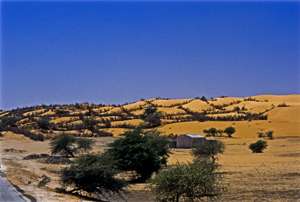
In more modern times we’ve seen maps used to show the devastating paths of tsunamis and the epicenters of quakes. Maps show us the destructive forces of nature, like the creeping dread of the Sahara desert, or the paths of hurricanes and tornados and the arcs of loss across the states where those killers touch down. Maps also portrayed manmade disaster like the destruction let loose by the Deepwater Horizon, as its killing oils reached the silver reed coastlines of the Gulf of Mexico. Maps of hydroelectric projects mark the loss of valley’s forests, and Indian villages with the blue lines of deep water.
Equally, or perhaps more, important maps show us future losses. Right now, in Canada, maps abound showing the proposed path of the Enbridge Oil Sands pipeline from the Alberta oil sands all the way across northern British Columbian mountain ranges and muskeg to a narrow fjord at a town called Kitimat on the Pacific Ocean. From there, supertankers will collect crude oil for the industries and cars of China.
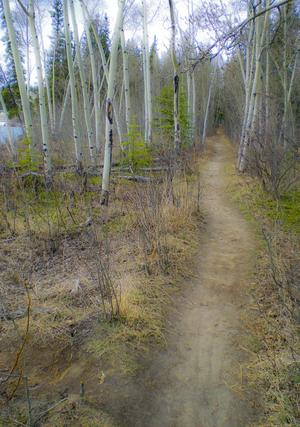
Proponents of the pipeline speak of it as if it marks prosperity across this country, like a vein of money that will bring jobs in the construction phase and open the purse of China right into Canadian government coffers. But an overlay on that map also speaks of potential loss. Supertankers threaten to rewrite our coastlines from the pristine home of orca and sea otter, to the barrens left behind by oil spills. Broken pipelines threaten salmon spawning grounds and the haunts of those icons, the moose and beaver, not to mention the homes of the great, great grandchildren of those same First People we stole the continent from years ago.
The trouble is, most people just look at what is, and they don’t see the competing futures these maps propose anymore than people driving past a proposal sign for local development question the losses that development will cause. Those who propose the development see prosperity in new homes for sale and new retail stores. Whereas, reading the losses, I see the destruction of the trees and the birds and small animals that live within their green space.
So I’m suggesting we need to take the time to reread our maps and recognize the losses our development proposes. Otherwise we threaten to be like our forefathers and repeat their destructions. We need to listen to North America’s First People and remember the animals we share this earth with. Otherwise we threaten the very Garden of the World that caught settlers imaginations so many years ago. If we don’t, we’re likely to end up like the civilizations on those ancient maps – lost in time and remembered only for all the destruction we caused.
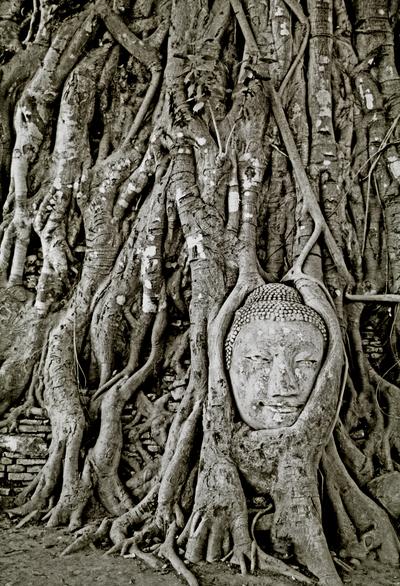
I’m sitting here watching the snow fall on the western edge of North America and contemplating how with the spread of people over all of the continents leaves no mysterious ‘promised land’ to cling to. As I’ve written in previous posts, in earlier centuries people sought Prestor John or mysterious islands. They sought an easy route to India and the Northwest Passage. All of these were, over time, debunked, but in our restless human need to seek, we replaced those distant vistas with something else. At least in the past we did.
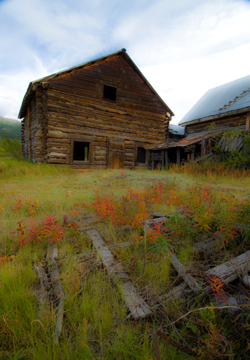
The exploration of North America helped with that. As the surveyors moved west they opened up awareness of a great mysterious place called the American West. The acquisition of the Louisiana Purchase brought Lewis and Clark’s expedition and knowledge that the western mountains were more than one range and a new awareness of how broad the continent was. While they set to rest the final hopes that the Columbia and Missouri Rivers might connect and form a Passage to India, tales of what they had seen brought a new hope that, if not a promised land, there might at least be a Garden of the World in the rich lands westward.
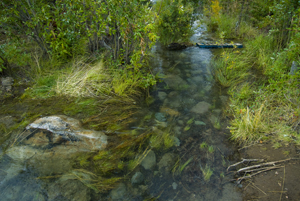
Lewis and Clark were followed by the Topographical Engineers – a small elite branch of the army, whose most famous member was John Charles Fremont. Fremont took with him a red-faced German topographer named Charles Preuss. With Kit Carson, these three set out to map the trail west, determine where to establish outposts, and scout passes over the mountains. While the results of their first venture were of only limited value for its maps, Fremont’s dramatic escapades of planting a US flag on a high peak to demonstrate the national resolve of ‘America strong and triumphant from sea to sea’, and his colorful journal, apparently launched many settlers westward. Subsequent Fremont/Preuss ventures resulted in some of the best maps of the day, extending knowledge down into California and erasing as much fanciful cartographic information, as it established. Preuss’s expertise in creating maps led not only to cartographic information, but also to the first ‘road map’ to the west.
Other explorers like John Wesley Powell, extended our knowledge of areas around the Grand Canyon as they travelled down the Green River and into the cataracts of the Colorado River within the Canyon. His further expeditions surveyed much of southern Utah from the Colorado to the Nevada line. Powell’s work also resulted in warnings about the old methods of agricultural farming. The warnings weren’t heeded and it took the dust bowl dirty thirties to prove him right. But Powell gave America an even greater legacy. He lobbied for, and finally achieved, the creation of the United States Geological Survey, which continues to this day to provide detailed maps of the country.
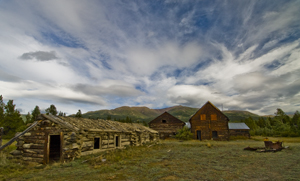
The only problem with this is that detailed maps removed the mystery and it seems to me it impacted the human psyche. From America, explorers joined the Europeans in the further exploration of our planet. We delve into the depths of the ocean, the frigid wastes of the Arctic, and into the humid breadth of the Amazon Rain Forest. But even those areas are being explored and the race for space seems to have died. It makes me wonder if part of the anger and anxiety we see in our culture isn’t partially due to the fact we have no new vista to call us and no new ‘promised land’ to bring out our best.
Two new short stories are now available on Amazon.com and Smashwords.
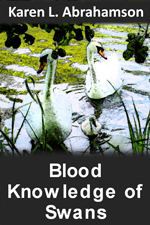 A small child, a string of pearls and a colony of swans converge in this short story of family life gone wrong. In Bella’s world of beautiful swans, her mother is the most beautiful creature of all. But swans abandon Bella every year and now her mother may abandon her, too. In a world filled with magic, what’s a child to do?
A small child, a string of pearls and a colony of swans converge in this short story of family life gone wrong. In Bella’s world of beautiful swans, her mother is the most beautiful creature of all. But swans abandon Bella every year and now her mother may abandon her, too. In a world filled with magic, what’s a child to do?
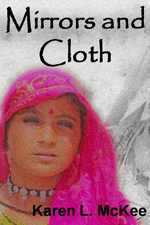 Lost in Rajasthan, the home of camels, hevalis, ornate men’s turbans and women draped in mirror-embossed saris, freelance journalist, Lena, must deal with strange customs and two men who profess to love her. Choosing the right path can be as convoluted as the twists on a Rajasthani turban.
Lost in Rajasthan, the home of camels, hevalis, ornate men’s turbans and women draped in mirror-embossed saris, freelance journalist, Lena, must deal with strange customs and two men who profess to love her. Choosing the right path can be as convoluted as the twists on a Rajasthani turban.
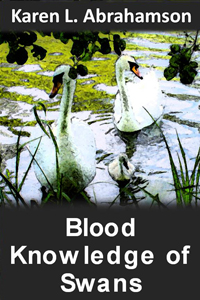 Welcome to my latest free fiction short story, Blood Knowledge of Swans. The tragic tale of a child, and magic gone horribly wrong, to read on, click Here.
Welcome to my latest free fiction short story, Blood Knowledge of Swans. The tragic tale of a child, and magic gone horribly wrong, to read on, click Here.
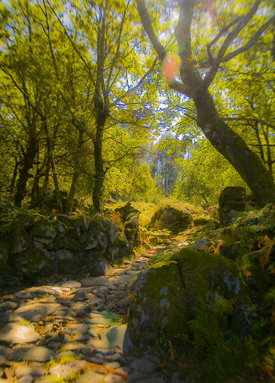
I just read a great post by my friend and fellow writer, Matthew Buchman. Matt wrote about goal setting and why he always sets hugely high goals, and how he (usually) berates himself for not reaching those goals instead of celebrating the numerous accomplishments his goals have helped him achieve. He also wrote about how he intends to continue set superhuman goals, because it keeps him going, pursuing the dreams he has for his writing. This got me thinking about goals and maps, because what is a goal, anyway, but a map of where you are trying to go? You set your goals farther and you’ll probably go farther. You set easy to accomplish goals and you might not reach the brass ring you really wanted to achieve.
This made me think about the boundaries we place around our lives and how the mapmakers of North America have perhaps influenced how we think. I’m talking about the surveyors who first set boundaries across the landscape. At first, North American surveyors took a metes and bounds approach to surveying, much the same as is used in England. A metes and bounds description might be something like, Beginning at the cherry tree growing where Hazy Creek joins the Swift River, north along Swift River 200 rods to the stone wall next to Cascade bridge bordering the road, then West along the road to a lightning-struck maple at the corner of Christopher Hopper’s place, thence, south toward Hazy Creek where a cairn has been set next to the ford, and thence eastward along Hazy Creek to the beginning place.

This approach to placing boundaries relative to the landscape, shifted with the survey of the Mason-Dixon line, to an approach dependent upon accurate readings of latitude, and on a process of taking horizontal measure with a chain and surveyors level and frequent (every 10 degrees or 17.5 kilometers) astronomical observations. They even made careful adjustments for the earth’s curvature.
Surveyors subsequent to Mason and Dixon used similar methods as they moved forward to comply with the Land Ordinance Act of 1785, which modified a proposal originally made by Thomas Jefferson, to use the principle of rectangular surveys, instead of the irregular metes and bounds, to partition the landscape. Congress envisioned a series of townships along the Ohio River and up to the great lakes and so on westward. As a result, teams of surveyors headed west with axemen chopping a line through the forest. Of course the Indians had other thoughts about the measuring of the land which they thought of theirs. But the surveyors kept coming and the trees fell as the surveys were made and the lands of America became something new: a checkerboard landscape of straight lines and right angles as exemplified by the four corner meeting if Utah, Colorado, New Mexico and Arizona and as seen on any map of America.
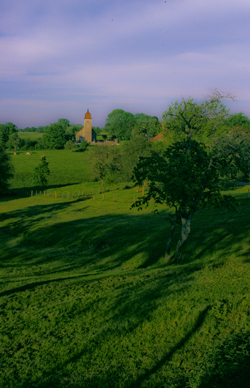
How does this relate to goals? Well all these straight lines got me wondering if setting too-clear boundaries might also set boundaries in our minds. It got me wondering if Matt’s ideas of setting goals that almost surely surpass our abilities (read boundaries) might actually make us reach farther.
With that in mind, I’ve modified my annual writing goals as follows:
Original:
Revised writing goals:
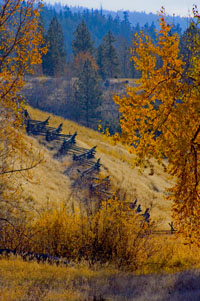
The thought of publishing 25 items fills me with fear because it means I have to write those stories or novels. I knew I could accomplish the 3-4 novels, but I don’t know if I can accomplish this. So I’ve stretched beyond those neat little borders I set for myself. I’m back into the wild spaces marked by metes and bounds. And you know what? If you fly over all those neatly surveyed spaces, you’ll find that fence lines and roads and buildings generally follow more natural paths anyway. So here’s to breaking boundaries and going to those new places nature takes us.